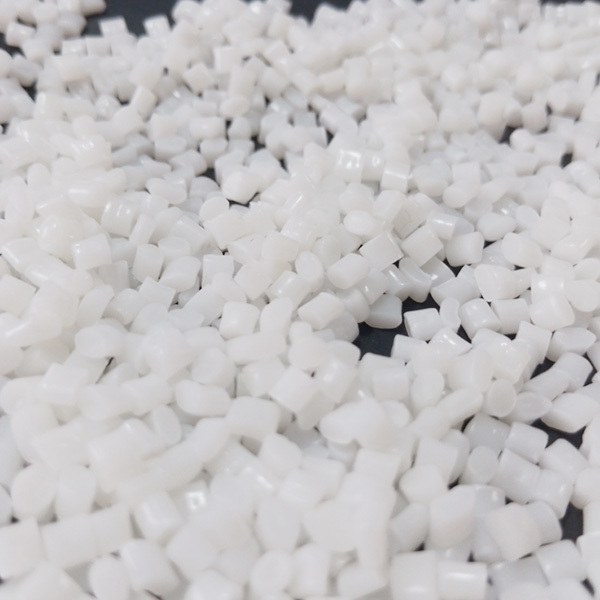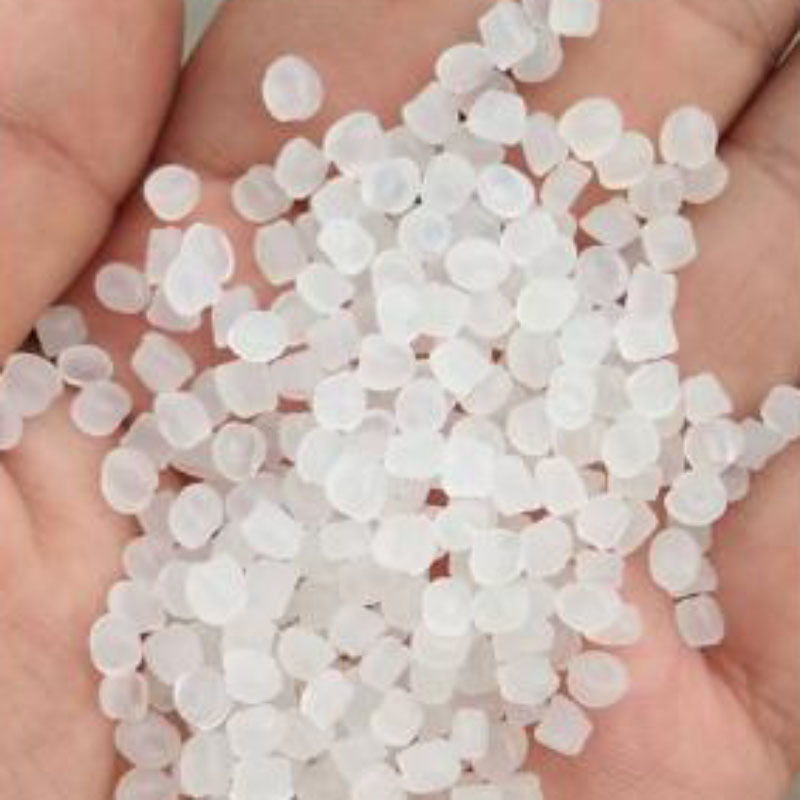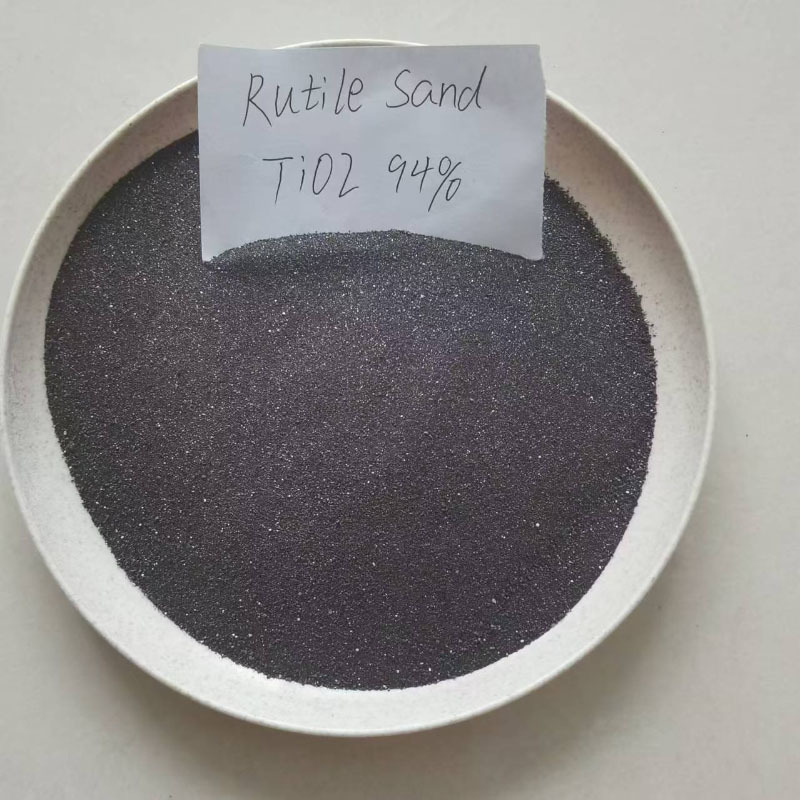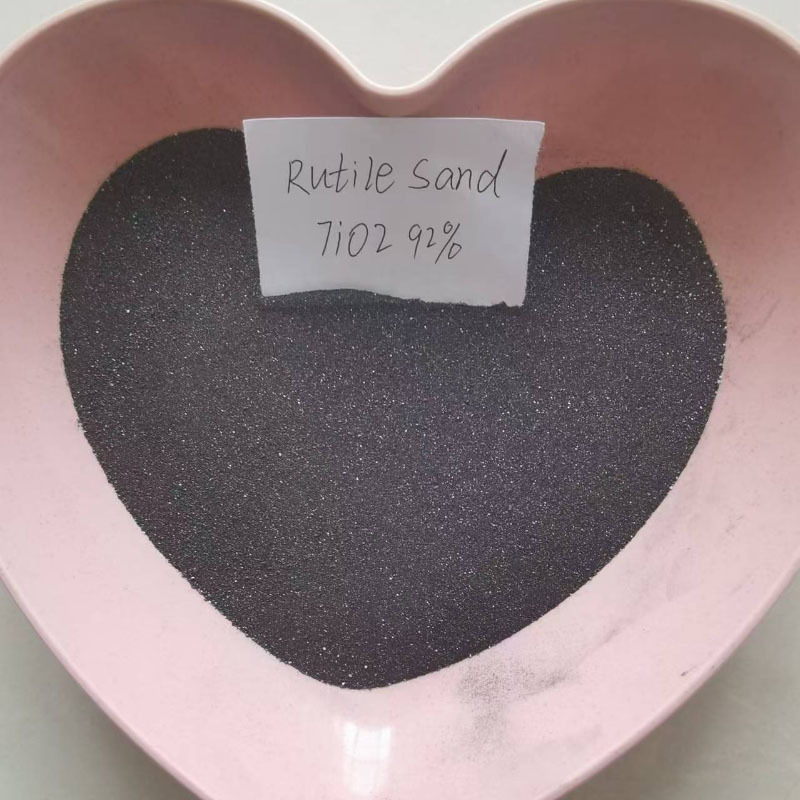Unlocking the Potential of Rutile Sand 94% in Modern Chemical Applications
Release Time:
Jun 02,2025
Rutile Sand 94% is a mineral that plays an integral role in the chemical industry, particularly in the development of new chemical materials. Composed primarily of titanium dioxide (TiO2), Rutile Sand is known for its exceptional brightness, durability, and resistance to ultraviolet light. These properties make it an invaluable resource across a variety of applications. One of the most prominent u
Rutile Sand 94% is a mineral that plays an integral role in the chemical industry, particularly in the development of new chemical materials. Composed primarily of titanium dioxide (TiO2), Rutile Sand is known for its exceptional brightness, durability, and resistance to ultraviolet light. These properties make it an invaluable resource across a variety of applications.
One of the most prominent uses of Rutile Sand 94% is in the production of high-quality pigments. Its high refractive index and excellent opacity allow it to produce vibrant colors in paints, coatings, and plastics. Manufacturers rely on this mineral to enhance the aesthetic appeal and longevity of their products. Rutile Sand’s stability under heat and light exposure further adds to its desirability, ensuring that painted surfaces maintain their brilliance over time.
In addition to pigment production, Rutile Sand 94% is also utilized in ceramics and glass manufacturing. The inclusion of Rutile Sand in these materials enhances their mechanical strength and thermal resistance. This makes ceramics made with Rutile Sand ideal for high-performance applications, such as in electrical insulators and tiles that require durability and resistance to thermal shock.
Furthermore, Rutile Sand is significant in the production of titanium metal, which is crucial in aerospace, medical, and sports equipment industries. The titanium extracted from Rutile Sand exhibits remarkable strength-to-weight ratio and corrosion resistance, making it suitable for components that must endure extreme conditions. The ongoing advancements in technology and material science continue to expand the possibilities for Rutile Sand, making it a focal point for research and development in new chemical materials.
Another emerging application for Rutile Sand 94% is in the field of environmental sustainability. Its usage in various filtration systems aids in the removal of pollutants and contaminants from water, contributing to cleaner water sources. This demonstrates the potential for Rutile Sand to not only serve industrial purposes but also to play a role in environmental conservation.
Overall, Rutile Sand 94% stands out as a multi-faceted material in the chemical industry. Its unique properties contribute to the innovation of new chemical materials, enhancing products across different sectors. As industries continue to seek sustainable and high-performance materials, the importance of Rutile Sand will likely grow, driving further exploration into its capabilities and applications. By understanding the potential of this mineral, manufacturers and researchers can leverage its benefits to create advanced solutions for today's challenges.
One of the most prominent uses of Rutile Sand 94% is in the production of high-quality pigments. Its high refractive index and excellent opacity allow it to produce vibrant colors in paints, coatings, and plastics. Manufacturers rely on this mineral to enhance the aesthetic appeal and longevity of their products. Rutile Sand’s stability under heat and light exposure further adds to its desirability, ensuring that painted surfaces maintain their brilliance over time.
In addition to pigment production, Rutile Sand 94% is also utilized in ceramics and glass manufacturing. The inclusion of Rutile Sand in these materials enhances their mechanical strength and thermal resistance. This makes ceramics made with Rutile Sand ideal for high-performance applications, such as in electrical insulators and tiles that require durability and resistance to thermal shock.
Furthermore, Rutile Sand is significant in the production of titanium metal, which is crucial in aerospace, medical, and sports equipment industries. The titanium extracted from Rutile Sand exhibits remarkable strength-to-weight ratio and corrosion resistance, making it suitable for components that must endure extreme conditions. The ongoing advancements in technology and material science continue to expand the possibilities for Rutile Sand, making it a focal point for research and development in new chemical materials.
Another emerging application for Rutile Sand 94% is in the field of environmental sustainability. Its usage in various filtration systems aids in the removal of pollutants and contaminants from water, contributing to cleaner water sources. This demonstrates the potential for Rutile Sand to not only serve industrial purposes but also to play a role in environmental conservation.
Overall, Rutile Sand 94% stands out as a multi-faceted material in the chemical industry. Its unique properties contribute to the innovation of new chemical materials, enhancing products across different sectors. As industries continue to seek sustainable and high-performance materials, the importance of Rutile Sand will likely grow, driving further exploration into its capabilities and applications. By understanding the potential of this mineral, manufacturers and researchers can leverage its benefits to create advanced solutions for today's challenges.
Keywords:
You Can Also Learn More About Industry Trends






